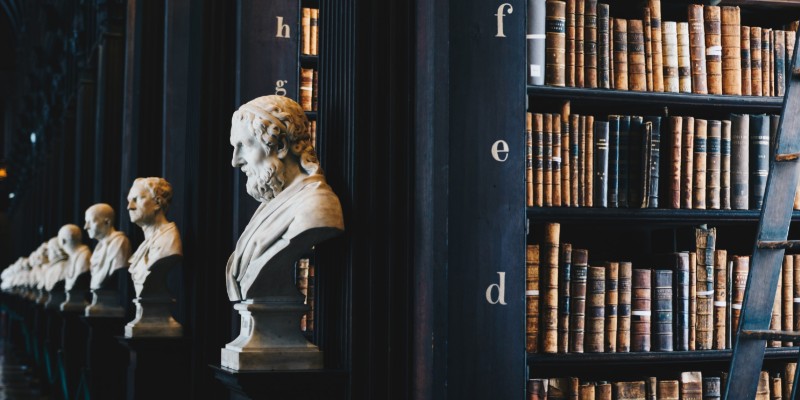I’ve got a secret, one I’ve never been willing to reveal in my twenty plus years as a librarian. I hate to burst the readers’ collective bubble, but here is the plain unvarnished truth, and you can trust a librarian to give you the correct answer, even if it’s painful. Here it is. Librarians are not allowed to read in the library. I’ve never pulled a book off a shelf and curled up in a chair even if there is a blizzard outside and no chance of a customer snowmobiling up to the front door. Sure, I can dip into a book to answer a customer’s question, but otherwise, no reading. It would be considered unprofessional. However, there is no rule against plotting murder. That I can do all I want. I’ve published twelve novels while working at the Tulsa City-County Library, and though I’ve never written during working hours I do get to research now and then. I’m a patron after all. My novels are known for their accuracy and they often concern historical figures.
I’ve often been asked how I get away with using historical characters in my novels, as if any day now there will be a knock at my door and I will be given a cease-and-desist order or be led off in handcuffs. So far this hasn’t happened, but I definitely believe I have a file with the FBI.
Sometimes in the writing of a mystery novel, especially a historical one, the opportunity to toss a historical character into the mix presents itself. I believe this is fine, even relevant, especially in my novels, which frequently center on a societal danger (anti-Semitism, Imperialism, etc.) or an event (Jack the Ripper, a royal wedding), as long as the person in question was actively involved in whatever I am writing about. If W.B. Yeats was an IRA sympathizer, or the Duke of Clarence a suspect in the Ripper murders, they are fair game. On the other hand, if one throws Jane Austen in the middle of a Regency mystery, because, well, she’s Jane-bloody-Austen, and it punches up a sagging novel, then you have a flight-of-fancy.
Having decided to use a historical figure such as Nicholas II in my latest novel, Dance with Death, I tell myself if I’m going to use him, I shouldn’t hold back. I won’t apologize for making him a suspect, a client, or even a villain if necessary. I merely need to prove my justification for using him. My protagonists Cyrus Barker and Thomas Llewelyn protect the tsarevich during a royal wedding in London. How do I get away with this? Because in 1893 he did in fact attend the wedding of George V.
Now, one could take the safe route and create a prince from a mythical country, but it takes the zing out of it. The reader has expectations. We want Mark Twain to be caustic or Oscar Wilde to be witty and flamboyant. Jack the Ripper must be elegant and menacing and the Prince of Wales, well, something of a rake with the ladies.
Needless to say my books require a good deal of research. Fortunately, I’m a librarian swimming in an endless sea of information. I lay hands on all sorts of materials and original manuscripts for information. Once I followed the famous serial killer H.H. Holmes from his capture to his execution through the New York Times historical database. In a dusty book on Irish history, I found the recipe for making nitroglycerin, and instructions for building a bomb with a clock timer. When researching the Baptist preacher Charles Haddon Spurgeon, a recurring character in my earlier books, I ordered a hymnal through an interlibrary loan and somehow received his own personal copy with notes in the margins.
I write mysteries, so if I bring a Victorian celebrity into a case you can be very certain that I will put his life in danger. It gives immediacy to the story and moves the reader to the edges of his or her seat. It doesn’t matter that we all know that Nicholas and his family were savagely butchered in 1918 by the Bolsheviks, I’m going to put his life in danger in 1894 in such a way that you’ll honestly have to worry if he will be killed by an assassin’s expanding bullet.
Occasionally, I will twist a character to show a side the reader hasn’t seen or didn’t even know existed. I don’t especially need to be shackled to historical accuracy, because this isn’t actual history. But we can get close. I’ve occasionally had a historical figure do something in a novel and discover in my research that he actually did it!
At some point during the writing the historical figure will cease to be one and become merely one of the actors in my play. I’m the director and he’ll have to sing for his supper. There are no special privileges. We can use the characters to make us laugh, or make us cry.
Lastly, armed with the vast amount of library material at hand, I often use my novels to simulate modern events. I’ve found an uncanny number of coincidences between the Victoria Era and the headlines we see today. As the French say, the more things change, the more they stay the same. Perfect fodder for writing a novel.
***


















